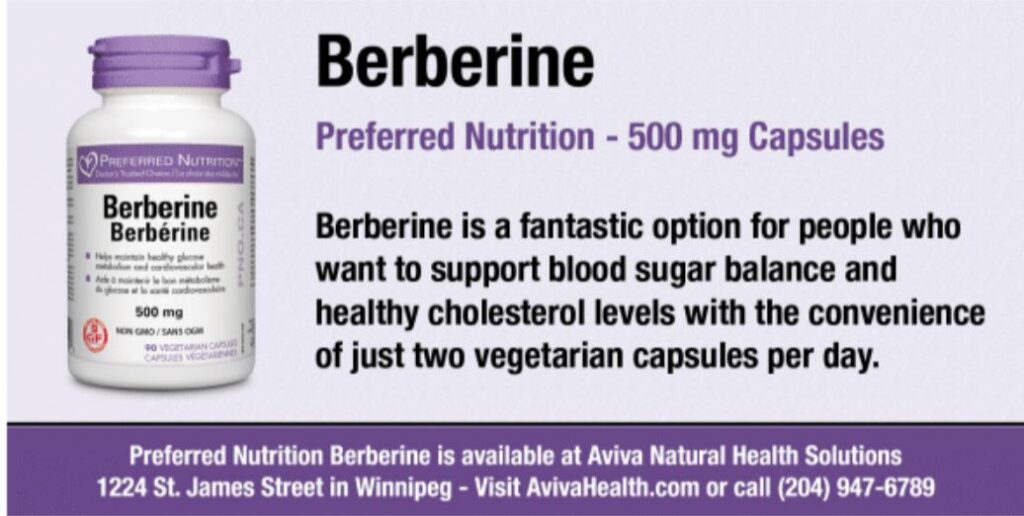
Natural Health
(part 5 of a series) Insulin is the hormone produced by the pancreas that moves blood glucose from the food we eat into our tissues and organs; it is needed for energy and a multitude of important functions. Insulin resistance (IR) is a physiological state where our cells become resistant to the effects of insulin and is an underlying cause of many serious health conditions.
The goal of this series of articles is to show how we can restore insulin sensitivity to our cells and help reverse IR. When our cells are more sensitive to the effects of insulin, the many health problems associated with IR can be reversed, bringing you the greatest potential for living a long, disease-free life.
While most people associate high blood glucose and high insulin levels with type 2 diabetes, before reaching confirmation of that diagnosis, a host of other problems may develop which should be a red flag that it’s time to correct the underlying cause of these problems by lowering blood glucose and insulin levels through lifestyle, diet, and supplements. Just about every health problem can be improved by correcting this one overarching cause.
While there are a number of dietary changes and lifestyle modifications to consider, in this installment I’ll outline the relationship between habitual gait speed and insulin resistance, and how reducing oxidative stress and improving mitochondrial function can increase insulin sensitivity while helping to control inflammation. I’ll also discuss the differences between white and brown fat, the benefits of saunas, and some of the foods and dietary supplements that can help. If you haven’t read the earlier parts in this series, I recommend you go to avivahealth.com/zassman, as they contain important information and additional context.
Habitual Gait Speed (HGS)
A person’s walking gait speed (also called habitual gait speed) and balance is strongly associated with insulin resistance and cognition. A three-year survey of 1,168 non-diabetic adults found slow gait speed and weak muscles to be associated with IR in men (not women). I have found that wearing a therapeutic footwear product like kybun and focusing on walking rapidly using a proper walking technique brings a wide variety of benefits. It’s important to compress your heel (dorsiflexion) and then push off with the toe (plantar flexion) when walking. Kybun therapeutic footwear naturally helps you stand more erect and combined with the right walking technique can help to rebuild knee cartilage, eliminate knee, hip, and back pain, and improve your balance and posture
Reducing Oxidative Stress
During the energy production process, unstable molecules called reactive oxygen species (ROS) are created. This process results in oxidative stress that reduces the cell’s natural response to insulin, making it insulin resistant. Exercise can help counteract that. Although the stress from exercising does produce ROS in our muscles, exercise also increases our ability to remove ROS. The removal effect lasts longer, so the net result is that exercise helps reduce ROS and the many associated health problems including IR and aging.
Controlling Inflammation
Many of my previous articles have discussed inflammation and oxidative stress. These natural processes are critical to the optimum function of our immune system, helping us to defend against infection and recover when we’ve been injured. Our immune cells use inflammatory and oxidative stress events to protect us from invaders like bacteria and viruses and help repair our tissues following injury.
Unfortunately, these normally beneficial processes can become chronic if they aren’t resolved. When infections become prolonged, as with periodontitis (gum infections) or infectious mononucleosis, IR can develop. There are markers of chronic inflammation, including C-reactive protein (CRP) which can be detected through a blood test. If a test indicates elevated CRP, it’s important to find the cause and resolve it, as it may indicate that you are fighting a chronic infection. Chronic, unresolved inflammation is strongly connected to IR.

Cold Therapy & Body Fat
Known as The Iceman, Wim Hof is a Dutch motivational speaker and athlete known for his ability to withstand cold temperatures. He’s held records for swimming under ice, and runs barefoot half marathons on ice and snow. Wim’s research combines breathing and cold therapy, with tremendous health benefits. While not everyone has the determination and willpower to immerse their body in ice water, research has proven that frequent exposure to cold temperatures improves insulin sensitivity. You can learn more by going to wimhofmethod.com.
Our body has predominantly three types of fat: white fat (white adipose tissue, or WAT), beige fat, and brown fat (for simplicity, I’ll call both beige and brown adipose tissue BAT). Most of the fat in our body is WAT. Mitochondria have a red-brown colour; the reason WAT is white is due to its lack of mitochondria. Some parts of our body have BAT, and the reason this fat is beige or brown is because it has a high concentration of mitochondria.
Normally, WAT wants to store fat, while BAT wants to burn fat and regulate our core body temperature; BAT’s main function is to convert energy from food into heat. Without going into the technical details, BAT essentially becomes activated when we are exposed to colder temperatures. By lowering the temperature of your shower or bath water, a hormone (adiponectin) is produced which lowers IR and improves insulin sensitivity.
Berberine is a natural plant compound that provides a host of benefits, including activating BAT. Supplementing with berberine is showing promise in clinical studies as a natural medication to help combat obesity, enhance thermogenesis, and improve insulin sensitivity. Clinical trials have found that the hypoglycemic effect of berberine is comparable to metformin, one of the most commonly prescribed drugs for treating type 2 diabetes. Other studies have shown that berberine can help reduce body weight in obese individuals, and works to lower cholesterol and triglycerides.
Heat Shock Proteins
Heat shock proteins (HSPs) are produced in response to muscle breakdown after exercise. This results in the hypertrophy response (increasing the size of a fat cell or muscle fibre) by attracting amino acids that help increase muscle fibre size. HSPs can lower IR, combat diabetes, and help the body control blood glucose levels. Along with dietary changes and exercise, HSPs can be effective in helping to reverse type 2 diabetes. HSPs are also activated when you are in an infrared sauna, and they not only can lower IR and increase insulin sensitivity, they can repair damaged cells.
A study of diabetic mice found that that being in a sauna three times a week for three months resulted in a 31 per cent decrease in insulin levels, a significant decrease in fasting blood glucose, and improved insulin sensitivity. When you sweat in an infrared sauna, the benefits to metabolic health are similar to intense to moderate physical exercise. As some diabetics can’t exercise due to disabilities, pain, or other medical conditions, using an infrared sauna can be an excellent alternative.
A few foods and supplements that can help the body produce HSPs include broccoli sprouts, sulforaphane, extra virgin olive oil, Oliphenol (Olivenol), curcumin, chia seeds and oil, allicin (from garlic), blueberries, colostrum, lion’s mane, graviola, and lavender.
When combined with the right diet and lifestyle changes, you can help restore insulin sensitivity, reverse IR, help prevent disease, and feel better throughout the day.
Nathan Zassman is the owner and president of Aviva Natural Health Solutions.

